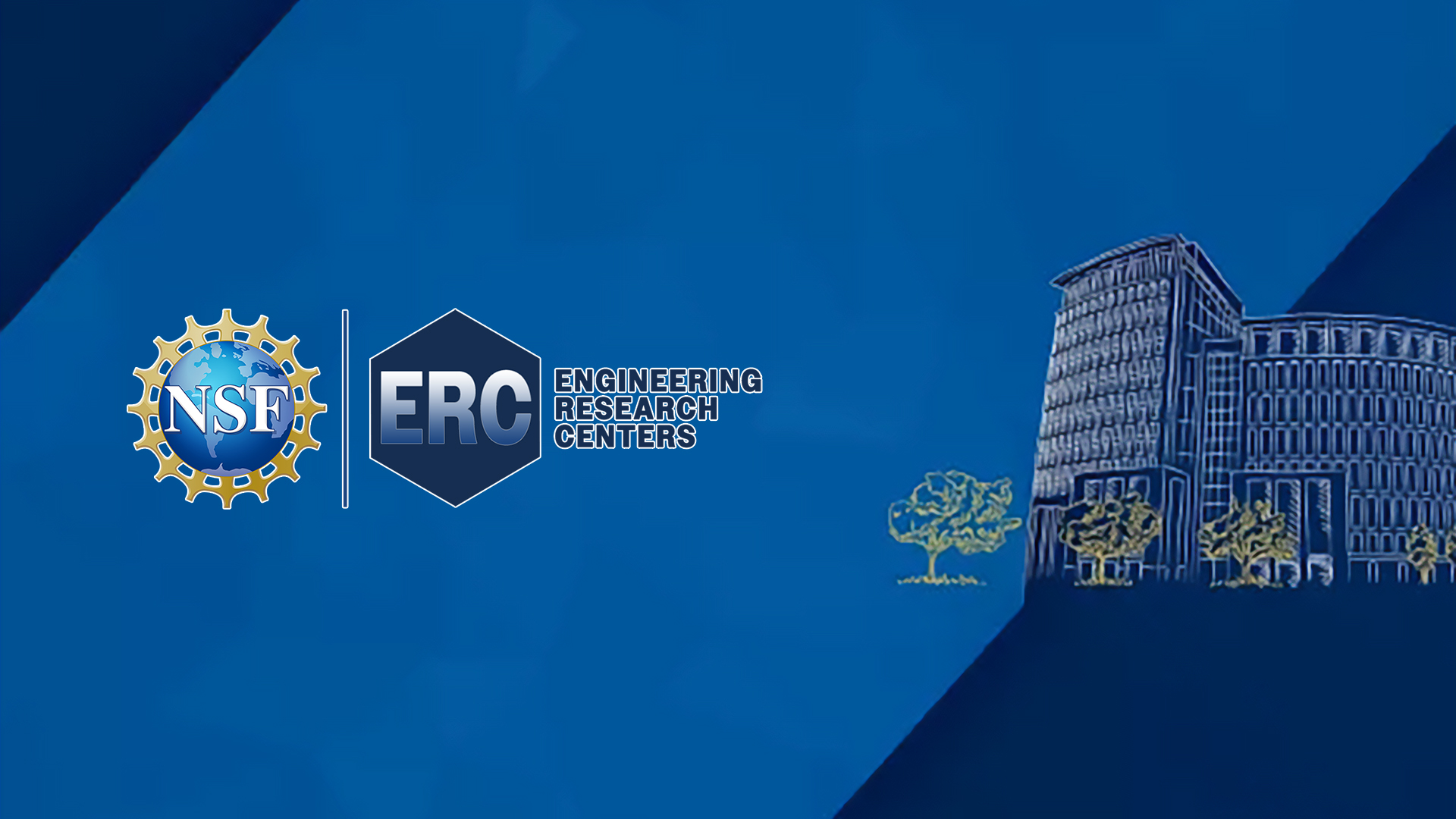NEWT's Trap-n-Zap Electrocatalytic Technologies Achieve Transformative Removal of Nitrate and Perfluorinated Compounds
Outcome/Accomplishment
Researchers at the National Science Foundation (NSF)-funded Nanotechnology Enabled Water Treatment (NEWT) Nanotechnology Engineering Research Center (ERC) at Rice University have Identified earth-abundant electrocatalysts for nitrate reduction and procedures for nano-enabling electrodes. The team found that electrocatalysis using nanotechnology enables selective transformation to innocuous products without the addition of chemicals in point-of-use and off-grid technologies. Their patent for nano-sized boron-doped diamond (BDD)-enabled electrodes for water treatment and chemical sensing has been commercially licensed by Localized Water Solutions as the E-drink solution – a portable photoelectrocatalytic cup that inactivates E. coli for water disinfection. In collaboration with the ERC's industry members, the team has developed a platform for electrocatalytic testing at scale.
Impact/Benefits
Nitrate and perflourinated compounds (PFAs) are important pollutants that pose historic and emerging regulatory challenges in drinking waters. Nitrate is the most commonly occurring groundwater pollutant in the US, Europe, and China; one of the top ten most commonly reported drinking water violations in the USA; and, its high cost of treatment has led to abandonment of groundwater even in California where access to water is a major issue now during consolidation of small utilities. State regulations and advisory limits on PFCs across the USA have emerged over the past few years, requiring on-site treatment primarily at small groundwater treatment wellheads. There is an urgent need for point-of-use technologies that can transform these hazardous compounds into innocuous species without brines or waste generation. NEWT's work seeks to develop and optimize electrocatalytic processes based on advanced reduction processes (ARPs) and advanced oxidation processes (AOPs). Their recent work advances electrode designs using nano-BDD that can reduce electrode costs by more than 10,000 times.
Explanation/Background
Electrode materials are a major cost driver as described by techno-economic analyses (TEA); significant reductions in system costs can be achieved by either improving the efficiency of the electrodes or by using lower-cost electrodes that may have slower rates of reaction. Specific challenges for NEWT's work included selectivity on the electrochemical transformation of target pollutants over competing species towards the desired final products: a yield of nitrogen (N2) from nitric oxide (NO) and innocuous species from Perfluoroalkyl and Polyfluoroalkyl Substances (PFAS).
The project leveraged its prior Trap-n-Zap strategy to concentrate target pollutants on the electrode by selective adsorption using multifunctional conductive nanomaterials prior to conducting the electrochemical charge transfer processes for pollutant removal. The team sought to scale up the technologies by developing electrochemical reactors capable of translating at pre-pilot and at test-bed levels. Because the two targeted pollutants undergo very different redox-based electrocatalytic reduction processes and occur at orders-of-magnitude different concentrations, they offered excellent end-member pollutants to develop a robust electrocatalytic advanced reduction process (eARP).
The team described a revolutionary method for quick nanotube synthesis without decrementing hierarchical order or nanotube integrity. This novel method holds the promise of notoriously decreasing manufacturing costs by 5-fold. The team further developed a synthesis of nano-BDD to overcome the cost barriers of BDD macroelectrodes. The nano-BDD electrodes present similar electrocatalytic behavior than macroscopic thin-film BDD with wide electrochemical windows. Three-dimensional metal electrodes can be used as a substrate for nano-particle attachment to modify electrocatalytic responses and improve selectivity of materials. Trap-n-Zap electrodes were evolved based on selective preconcentrations of target pollutant on the electrode surface based on physical or chemical properties. To advance the Trap-n-Zap concept for inorganic pollutants, the team focused on nitrate. The electrochemical reactors achieved flow-by and flow-through for both 3D nano-enabled electrodes and system modeling.
Part of this work was supported by EU Marie Curie funding for Ana Sofia Fajardo, a two-year visiting post-doc at Arizona State University. The team also collaborated with a group from Lawrence Livermore National Labs led by Prof. Patrick Campbell. Over 13 research articles and 2 patent disclosures have been published. A TEA evaluated the competitiveness of electrochemically-driven technologies as advanced oxidation point-of-use treatment systems benchmarked against commercial adsorption carbon block (CB). A second TEA study evaluated the competitiveness of electrochemical reduction of nitrate. The NEWT technology was benchmarked against reverse osmosis systems.
Location
Houston, Texaswebsite
Start Year
Energy and Sustainability
Energy, Sustainability, and Infrastructure
Lead Institution
Core Partners
Fact Sheet
Outcome/Accomplishment
Researchers at the National Science Foundation (NSF)-funded Nanotechnology Enabled Water Treatment (NEWT) Nanotechnology Engineering Research Center (ERC) at Rice University have Identified earth-abundant electrocatalysts for nitrate reduction and procedures for nano-enabling electrodes. The team found that electrocatalysis using nanotechnology enables selective transformation to innocuous products without the addition of chemicals in point-of-use and off-grid technologies. Their patent for nano-sized boron-doped diamond (BDD)-enabled electrodes for water treatment and chemical sensing has been commercially licensed by Localized Water Solutions as the E-drink solution – a portable photoelectrocatalytic cup that inactivates E. coli for water disinfection. In collaboration with the ERC's industry members, the team has developed a platform for electrocatalytic testing at scale.
Location
Houston, Texaswebsite
Start Year
Energy and Sustainability
Energy, Sustainability, and Infrastructure
Lead Institution
Core Partners
Fact Sheet
Impact/benefits
Nitrate and perflourinated compounds (PFAs) are important pollutants that pose historic and emerging regulatory challenges in drinking waters. Nitrate is the most commonly occurring groundwater pollutant in the US, Europe, and China; one of the top ten most commonly reported drinking water violations in the USA; and, its high cost of treatment has led to abandonment of groundwater even in California where access to water is a major issue now during consolidation of small utilities. State regulations and advisory limits on PFCs across the USA have emerged over the past few years, requiring on-site treatment primarily at small groundwater treatment wellheads. There is an urgent need for point-of-use technologies that can transform these hazardous compounds into innocuous species without brines or waste generation. NEWT's work seeks to develop and optimize electrocatalytic processes based on advanced reduction processes (ARPs) and advanced oxidation processes (AOPs). Their recent work advances electrode designs using nano-BDD that can reduce electrode costs by more than 10,000 times.
Explanation/Background
Electrode materials are a major cost driver as described by techno-economic analyses (TEA); significant reductions in system costs can be achieved by either improving the efficiency of the electrodes or by using lower-cost electrodes that may have slower rates of reaction. Specific challenges for NEWT's work included selectivity on the electrochemical transformation of target pollutants over competing species towards the desired final products: a yield of nitrogen (N2) from nitric oxide (NO) and innocuous species from Perfluoroalkyl and Polyfluoroalkyl Substances (PFAS).
The project leveraged its prior Trap-n-Zap strategy to concentrate target pollutants on the electrode by selective adsorption using multifunctional conductive nanomaterials prior to conducting the electrochemical charge transfer processes for pollutant removal. The team sought to scale up the technologies by developing electrochemical reactors capable of translating at pre-pilot and at test-bed levels. Because the two targeted pollutants undergo very different redox-based electrocatalytic reduction processes and occur at orders-of-magnitude different concentrations, they offered excellent end-member pollutants to develop a robust electrocatalytic advanced reduction process (eARP).
The team described a revolutionary method for quick nanotube synthesis without decrementing hierarchical order or nanotube integrity. This novel method holds the promise of notoriously decreasing manufacturing costs by 5-fold. The team further developed a synthesis of nano-BDD to overcome the cost barriers of BDD macroelectrodes. The nano-BDD electrodes present similar electrocatalytic behavior than macroscopic thin-film BDD with wide electrochemical windows. Three-dimensional metal electrodes can be used as a substrate for nano-particle attachment to modify electrocatalytic responses and improve selectivity of materials. Trap-n-Zap electrodes were evolved based on selective preconcentrations of target pollutant on the electrode surface based on physical or chemical properties. To advance the Trap-n-Zap concept for inorganic pollutants, the team focused on nitrate. The electrochemical reactors achieved flow-by and flow-through for both 3D nano-enabled electrodes and system modeling.
Part of this work was supported by EU Marie Curie funding for Ana Sofia Fajardo, a two-year visiting post-doc at Arizona State University. The team also collaborated with a group from Lawrence Livermore National Labs led by Prof. Patrick Campbell. Over 13 research articles and 2 patent disclosures have been published. A TEA evaluated the competitiveness of electrochemically-driven technologies as advanced oxidation point-of-use treatment systems benchmarked against commercial adsorption carbon block (CB). A second TEA study evaluated the competitiveness of electrochemical reduction of nitrate. The NEWT technology was benchmarked against reverse osmosis systems.

